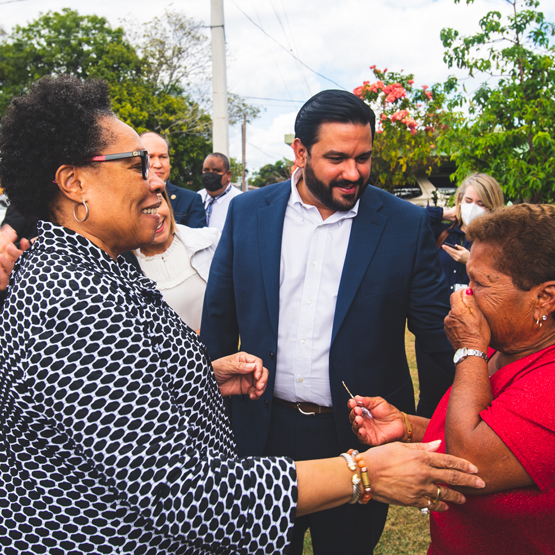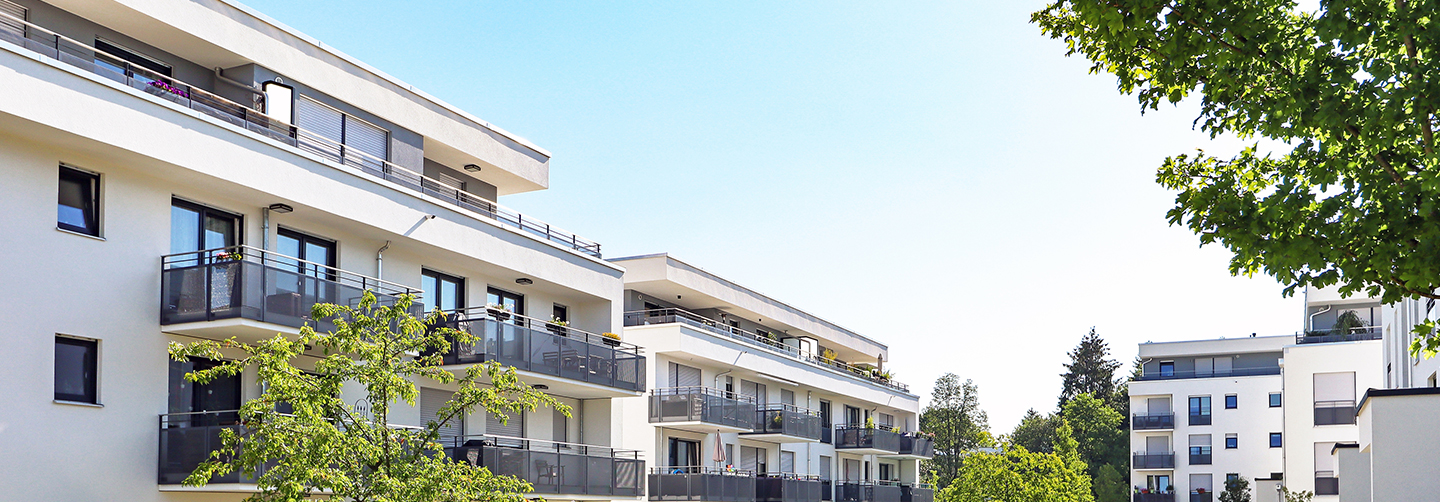
America is facing an affordable housing shortage.
 We must produce and preserve affordable homes for renters and homeowners.
We must produce and preserve affordable homes for renters and homeowners.
We know what tools are needed to address this issue.
We commit to confronting this challenge together through federal, state, local, nonprofit, and private partnerships.
This is our way home.

HUD invests in communities across the country. To see how HUD invests in your congressional district, city, county, Metropolitan Statistical Area (MSA), state, click here. To see how HUD invests in your Tribal community, click here.
HUD resources are used by communities to build and preserve a range of housing types. HUD also provides tools to help communities affirmatively further fair housing as they build and preserve homes.
See below examples of HUD programs that help create homes.
For more information on HUD programs, visit HUD.gov.
We empower communities to build affordable homes, rehabilitate aging properties, and support residents who are searching for rental housing. Everyone deserves a safe, stable place to call home.
- HOME Investment Partnership Program (HOME) provides flexible funding to states, counties, and cities to create affordable rental housing.
- Community Development Block Grants (CDBG) provides flexible funding to states, counties, and cities that can be utilized to purchase and convert properties to affordable apartments, purchase and prepare a site for rental housing development, rehabilitate aging properties, and support other housing activities.
- Housing Trust Fund provides grants to states to produce and preserve affordable housing for extremely low- and very low-income households. HTF can be used to buy, build, rebuild, or rehab eligible rental housing.
- Section 108 Loan Guarantee provides states, cities, and counties with a source of low-cost, long-term financing for larger projects. Communities have used Section 108 to support mixed-use development, renovate apartment buildings for low-income residents, and acquire and improve sites for affordable housing developments, among other eligible activities.
- Section 202 finances the construction, rehabilitation or acquisition of supportive housing for very low-income elderly persons.
- Section 811 funds the development of rental housing and supportive services for very low- and extremely low-income adults with disabilities. Section 811 also provides rental subsidies for these rental units.
- Federal Housing Administration (FHA) Mortgage Insurance programs help finance new multifamily construction.
- The Faircloth to RAD policy allows public housing agencies to create new federally assisted housing by helping them and their development partners more readily access financing for the development of new deeply affordable units.
- Project-based subsidies facilitate long-term rental assistance contracts with multifamily housing owners to make their market-rate units affordable to low-income tenants. HUD offers these subsidies through two programs: Project Based Rental Assistance (PBRA) and project-based vouchers. These programs provide streams of reliable, long-term rent payments that owners can leverage to reduce the cost of development financing.
Project-based subsidies facilitate long-term rental assistance contracts with multifamily housing owners to make their market-rate units affordable to low-income tenants. HUD offers these subsidies through two programs: Project Based Rental Assistance (PBRA) and project-based vouchers. These programs provide streams of reliable, long-term rent payments that owners can leverage to reduce the cost of development financing.
- HOME Investment Partnership Program (HOME) and Community Development Block Grant Program (CDBG) provide funds to states, counties, and cities that can used for rehabilitation of affordable single- and multifamily rental and owner-occupied housing.
- Rental Assistance Demonstration (RAD) was created in order to give public housing authorities (PHAs) a powerful tool to preserve and improve public housing properties
- Federal Housing Administration (FHA) Mortgage Insurance Origination programs finance the preservation of multifamily rental properties.
- Multifamily project-based rental assistance provides a range of renewal options that leverage private capital to preserve rental-assisted properties.
- Indian Housing Block Grant (IHBG) Program provides grants to American Indian tribes and tribally designated housing entities (TDHEs) and Alaska Native villages to develop, maintain, and operate affordable housing in safe and health environments on Indian land.
- Choice Neighborhoods program leverages public funding to encourage private investment in struggling neighborhoods with distressed public or HUD-assisted housing through a comprehensive approach to locally driven neighborhood transformation.
- Mixed-Finance Redevelopment merges public, private, and non-profit backing to develop and operate housing developments integrated into the surrounding community and designed for residents with a wide range of incomes.
We support affordable and sustainable homeownership. HUD funding helps to facilitate the construction of new homes and the rehabilitation of existing properties as well as down payment assistance programs that further expand access to homeownership for low- and moderate-income households
- HOME Investment Partnership Program (HOME) provides flexible funding to states, cities, and counties that can be to assist low-income homebuyers in purchasing, rehabilitating, or building new homes.
- Both HOME Investment Partnership Program (HOME) and Community Development Block Grant Program (CDBG) provide flexible funding to states, cities, and counties that can be used for rehabilitation of owner-occupied housing. CDBG can be used to acquire and convert vacant properties into homes; for example, transforming a vacant office building into affordable condos.
- Self-Help Homeownership Opportunity Program (SHOP) awards funding to national and regional nonprofit organizations and consortia to purchase and develop sites for homes. SHOP creates decent, safe, and sanitary housing for low-income persons and families through sweat equity and volunteer-based homeownership programs.
- FHA’s Single Family Housing programs provides mortgage loan insurance for loans used to finance the construction, renovation acquisition, or refinance of single family homes, including manufactured homes. home renovation and construction and the purchase of new Manufactured Homes.
- The Section 184 Indian Home Loan Guarantee Program guarantees home mortgage loans made to Native borrowers and provides them with a low down payment and flexible underwriting which can be used, both on and off native lands, for new construction, rehabilitation, purchase of an existing home, or refinance.
Rebuilding homes and communities post-disaster and strengthening community resilience to lessen the impacts of climate change and extreme weather events are key parts of our work. HUD has many tools to help communities build new sustainable homes, strengthen their housing stock, and increase community resilience. In doing so, HUD will provide communities the tools needed to ensure that fair housing is addressed in disaster recovery and resilience planning.
- Community Development Block Grant Disaster Recovery (CDBG-DR) is a critical resource for helping communities rebuild after a disaster. CDBG-DR can be used to rehabilitate damaged homes, for construction of new homes to restore and improve the housing stock, to buy damaged properties and relocate residents to safer areas, and to improve public facilities and infrastructure to protect the community from future disasters.
- Community Development Block Grant Mitigation (CDBG-MIT) grants are supplemental allocations that can be used in areas impacted by recent disasters to carry out strategic and high-impact activities to mitigate disaster risks and reduce future losses. CDBG-MIT can support improvements to make housing more resilient, such as clean energy practices and shared green space to manage stormwater.
Homes exist in neighborhoods, and a critical part of the work we do is empowering local governments to identify the needs of their neighborhoods, and design and implement community development strategies that enable housing production and foster thriving communities.
- Community Development Block Grants (CDBG) empowers cities to design and implement projects that best fit the needs and priorities of their communities. CDBG can be used for infrastructure such as water/sewer systems or broadband access, to improve public safety by adding streetlights or bike lanes, for neighborhood amenities like parks, playgrounds, and community centers, and for planning activities.
- Indian Community Development Block Grant (ICDBG) Program provides grants to develop viable American Indian and Alaska Native communities including funding for housing rehabilitation, land acquisition to support new housing construction, community facilities, infrastructure investments, and economic development opportunities.












